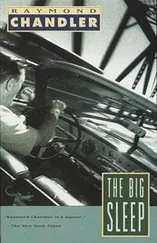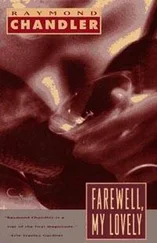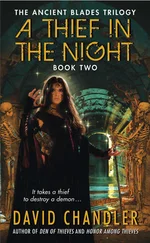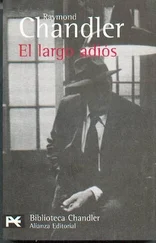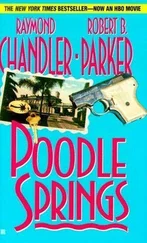Much the same could be said about drama, which has long since come to be considered as central to what we count as literature. If plays like Hamlet or King Lear do not lie at the heart of the field we have long called “English literature,” then what does? Drama, however, is no more reducible to “literature” than poetry is. The very urtext of the Western critical tradition, the one that tends to appear at the beginning of any historical anthology of “literary criticism,” is Aristotle’s Poetics . Yet Aristotle’s primary objects of consideration in that pioneering treatise—the plays of Sophocles’ Oedipus trilogy, for example—were theatrical works composed and staged in Athens in the decades before he wrote. Moreover, the categories of “rhythm,” “song,” and even “spectacle” were explicitly used to identify the basic “parts” of tragedy as Aristotle analyzed it (along with plot, character, diction, and thought). 23
Clearly, this expansion of the scope of Richards’ approach to practical criticism beyond the paradigm of the poem on the page had ample precedent, and it was conceptually important for shaping the discipline of “English” in the twentieth century. A second, much broader expansion of the scope of practical criticism would draw on the post-Enlightenment discipline of aesthetics, in which criticism was understood to extend beyond “literature” (even in its broadest sense) to the wider range of what we sometimes call “the fine arts.” In the eighteenth century when both the category of the fine arts and the discipline of aesthetics began to take shape, these other arts included painting, sculpture, architecture, and music. Each of these arts boasts a considerable—in some cases even venerable—body of critical commentary. The criticism of painting developed rapidly in Arnold’s nineteenth century. Among English critics who excelled in it we might think of Walter Pater (whose book on the Renaissance remains a classic), but literary types like William Hazlitt and Charles Baudelaire were also drawn to the criticism of painting.
Architecture criticism in English also boasts a rich tradition of writing that includes such minor masterpieces as John Ruskin’s “The Nature of Gothic.” In that brilliant analysis, Ruskin took issue with the view that classical architecture, with its salient regularity and unity of design, should be considered superior to the medieval style of cathedral making, with its equally conspicuous idiosyncrasy and asymmetry. He argued the case on the grounds that classical architecture enslaved the worker’s imagination to a master plan, while the Gothic approach allowed different levels of relative autonomy to local guilds and to the craftsmen who work in them. That, he explained, is why not all gargoyles on a medieval cathedral look alike, nor even all porticos or spires. Beyond his influential work on architecture, Ruskin himself wrote extensively about poetry, prose, and painting.
“The Nature of Gothic,” a chapter from an extraordinary book about late Renaissance Venice, is often included in anthologies devoted chiefly to literary criticism. 24At a certain level of abstraction, of course, some principles or tendencies of criticism can be said to obtain across a wide spectrum of the arts. Such generalizations might be loosely grouped together under the category of aesthetics, understood as the study of what it is that constitutes something as a work of art in the first place: the presence of made beauty, for example. Aesthetics, Ruskin showed, can have a political or ethical dimension, and his concern for the role of labor as a decisive consideration in critical judgment survives into the present. We encounter it again just below in the unlikely setting of a New Jersey convenience store in an argument favoring one Star Wars sequel over another on the basis of the fate of the laborers in each plot. 25
This more generalized idea of criticism, as practiced across many art forms, emerged forcefully in the movement known as Aestheticism, an important forerunner to the Modernism that brought with it such influential critical voices as Roger Fry in Britain and Clement Greenberg in America. Criticism is still understood in many contexts as a category that embraces all the arts, including the arts that have developed since the mid-nineteenth century such as photography, cinema, and the new media arts of our own moment. There are in fact good introductory books to be found—such as Noël Carroll’s On Criticism —that deal more generally with music, painting, and sculpture, as well as literature, drama, and cinema. 26However, as will become clear, the scope of the term criticism for the present book is not as broad as what is implied in aesthetics generally, nor yet limited to literary criticism in the narrowest sense of the term. To explain what it includes and why, I turn to the second of the two questions raised by Richards’ guiding program for practical criticism: how to generalize the benefits of criticism beyond personal pleasure and moral profit.
This second question requires that we consider how the practice of criticism matters to the practice of a given art in society at large. Looking thus broadly at culture, we might observe that a public that has developed a competence for doing criticism with (say) a lyric poem is likely to enhance the overall condition of the art—just as a critically sophisticated audience for theater in a city like London goes hand in hand with great productions and lively performance. Here is one of my favorite formulations of this point by the influential Canadian critic Northrop Frye, framed as a negative hypothesis about the consequences for a society that might seek to do without criticism:
…the fate of art that tries to do without criticism is instructive. The attempt to reach the public directly through “popular” art assumes that criticism is artificial and public taste natural. Behind this is a further assumption about natural taste which goes back through Tolstoy to Romantic theories of a spontaneously creative “folk.” These theories have had a fair trial; they have not stood up very well to the facts of literary history and experience, and it is perhaps time to move beyond them. 27
Some years ago, the witty musical parodist and comedian Tom Lehrer made the same point more starkly when he quipped that what makes folk songs “so atrocious is that they’re written by the people.” 28
Lehrer’s comment may sound harsh, but even some cases that seem to be exceptions to this rule actually prove it. Wordsworth started a revolution in English poetry around 1800 by attempting to return poetry to its sources in “low and rustic life” and by using the “actual language of men.” 29But the enormous sophistication that this program demanded both from its poets and its reading audiences alike is evident in the rich critical writings that supported and explained the enterprise: including Wordsworth’s Preface to Lyrical Ballads and Coleridge’s Biographia Literaria . Much the same can be said about the critical sophistication of recent Nobel laureate Bob Dylan. I don’t need to make this argument, though, because the Coen Brothers’ Inside Llewyn Davis (2013) already has, with its portrayal of Dylan’s immersion in the knowing musical and intellectual milieu of Greenwich Village in the early 1960s. 30“A Hard Rain’s a-Gonna Fall” did not itself fall from the sky but emerged from an environment rich in critical ideas, as Dylan’s autobiography also attests. 31In the second half of this book I address several cases in which criticism has mattered to creative production, sometimes quite explicitly, as in the example of Patricia Rozema’s film adaptation of Jane Austen’s Mansfield Park , which relies heavily on an essay by Edward Said about Austen’s handling of slavery in the novel.
Читать дальше

